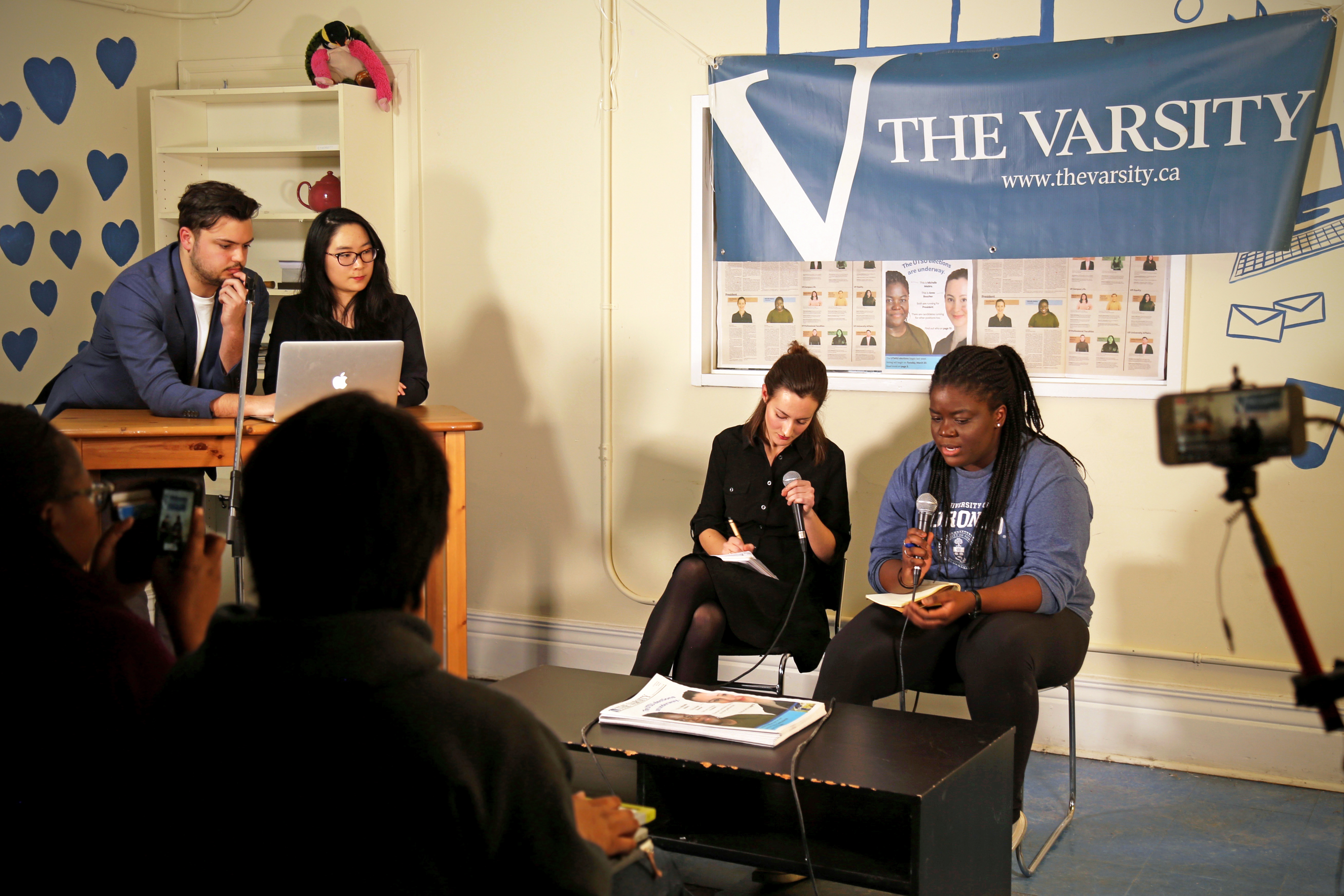Student Journalists Talk About ‘Existential Threat’ of Doug Ford’s Funding Opt-Out

Credit to Author: Jack Hauen| Date: Wed, 20 Feb 2019 14:53:08 +0000
Ontario student newspapers say they could face an “existential threat” due to the province’s plan to allow students to opt out of certain fees. And as legacy media shrinks away from all but the most attention-grabbing campus headlines, many worry that students and community members will be left without critical information about what those in power are up to behind closed doors.
Under the Ford government’s Student Choice Initiative announced last month, post-secondary students will be able to opt out of most student fees, except for those the province has designated “mandatory,” such as health plans and athletic fees. Left out of that designation are smaller groups that often focus on providing resources to marginalized students, and student papers—whose operating budgets depend on each student kicking in a couple dollars a year.
A new survey of about 600 Ontario students from note-sharing company OneClass found that 57 percent planned to opt out of student newspaper fees in the fall. Though the sample size isn’t huge, the numbers are still worrying leadership at student papers who are preparing for the worst.
The University of Toronto’s main student paper, The Varsity, could “cope with” an opt-out rate of 20-30 percent, editor-in-chief Jack Denton says. The number of pages per issue would probably shrink, but the coverage would remain fundamentally the same.
“An opt-out rate approaching 50 per cent really starts to pose an existential threat to us,” Denton says.
Advertisers like student papers that print tons of copies, since the papers are one of the few media that can get in front of student eyes easily and often. But if the Varsity doesn’t have money to print enough papers, and a dwindling readership, advertisers will likely pull out—causing a death spiral that can be very hard to stop, Denton says.
And if student papers die, so too will arguably the most important sources of news on campuses across the province.
If you live in Ontario, you’ve definitely heard about the massive alleged financial improprieties at the Ryerson student union—a story that was broken by the school’s independent student paper, the Eyeopener.
Jacob Dubé, the Eye’s editor-in-chief, is worried the paper’s reporters will be stretched too thin with a reduced budget next year to be able to invest the time that sensitive stories like that one require.
“Campuses are almost like small towns within cities, and if you don’t have people there listening on the ground at all times, then … you’re gonna miss all that stuff,” Dubé says. “You’re only going to get the big stuff, and maybe the stuff that universities and the unions want you to see.”
Some are beginning to recognize the importance of student media in the wider community. The McMaster University student paper, the Silhouette, was recently awarded the Best Media Outlet in the Hamilton Independent Media Awards, and three of its staffers won best reporters in different categories.
“We’re definitely making our mark in Hamilton right now,” Silhouette editor-in-chief Emily O’Rourke says. “Stories that CBC or the [Hamilton Spectator] wouldn’t cover, we’re the ones covering it.”
As it increasingly seems like many mainstream media outlets only head to campus for the latest free speech controversy, student papers are the ones attending each and every board of governors meeting, nipping at the heels of bureaucrats at the top.
“We are consistently the only media outlet to rigorously cover the university’s financials,” Denton says. “Year over year—the budgeting process, the performance of the endowment and pension fund investments, what money from capital projects is being spent on, what deferred maintenance is getting pushed down the road.
“Frankly, we’re talking about billions and billions of dollars in funds that somewhere like the Globe and Mail, or the Toronto Star, or the National Post probably doesn’t care about only in the context of the University of Toronto,” Denton says.
Student editors also have concerns about the accessibility of their jobs if they’re forced to take a pay cut. Only a certain class of person can afford to shell out money for tuition and work full-time hours for less than minimum wage—an even bigger problem considering student papers are often a training ground for the next generation of mainstream journalists, and most mainstream newsrooms already have their own diversity issues.
“We’re very lucky that we have people from a wide diversity of backgrounds who work for the Varsity,” Denton says. “And one of the things that allow them to do that, myself included, is the fact that these jobs pay, and they pay enough to offset not taking a full course load.”
The Varsity pays its editors minimum wage for 20-30 hours a week, depending on the position. At the Eyeopener, editors are paid $250 per week. At the Silhouette, it’s $14.45 per hour at 10 hours per week, or just $144.50 per week.
But as any student paper editor will tell you, Dubé said, the job almost always requires more than 30 or 40 hours per week—meaning most student editors are effectively paid well below minimum wage.
But there is hope that students might see the value in student news, and decide to pay for it on their own. Last year, the Varsity campaigned to raise its levy by 80 cents per full-time undergraduate to $2.81 per term, promising more, better coverage—and students voted for it.
With that extra money the Varsity has been able to expand its coverage at the Mississauga and Scarborough U of T campuses, and start a business section, a podcast and a blog: the Squirrel.
The income bump “has been extremely important to the success of the newspaper this year,” Denton says. “I cannot imagine a Varsity with a dramatic loss in funding being as important an institution on campus, both to our readers, and to our contributors.”
Follow Jack on Twitter.